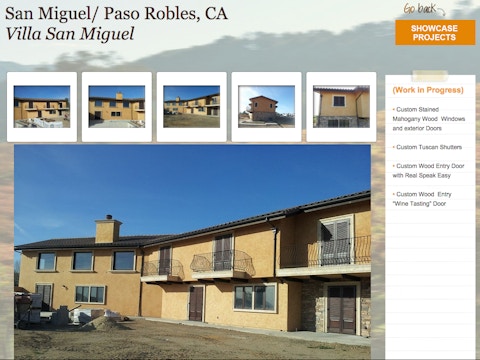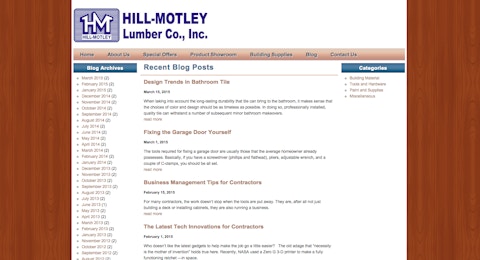Do you cringe when you check Google Analytics and see the same low (or worse, declining) flow of readers coming to and quickly leaving your blog?
If you've read a hundred other blog posts that talk about "How I grew my blog to 15,000 readers in one month" and want to chuck your computer at the wall because you swear you're doing everything you're supposed to but you're just not seeing any results, then this post is for you.
Sometimes there are very technical reasons that blogs fail. You might be competing with well known brands for keywords, or maybe your site isn't properly set up for the latest SEO strategies.
But most of the time it's not the website's fault, it's the writers and the owners. You can pour money into SEO upgrades and Google AdWords all day long, but if you can say "yes" to any of the items listed below then Google can't save you. Only you can.
Take a look at your last ten posts. If more than one is about an award you've won, a new product you've released or even a testimonial from a satisfied customer then you're not focusing on helping your audience, you're focusing on yourself.
I know it's tempting to use every resource available to show potential customers how great your products are, but your blog is the absolute wrong place to do that. Blogs are the prime place to show off your brand's personality and get your consumers engaged with the things you're most excited about in your industry.
If your target audience is DIYers, post how-to articles and videos.
If your target audience is builders, post articles that discuss strategies around differentiating their homes from other builders.
If you're not sure who your audience is, stop everything and find out before you write anything else.
If your blog looks like this, it’s focusing on you:
America Italiana is a window company based in California. From the looks of their site, they have some beautiful products, and they are making sure you know that by flooding their blog with the same products they feature on their site.
In this screenshot of one of their recent blog posts, you see that the whole "article" is actually a link to a feature page about a product in use. There is no additional or descriptive text left out of this screenshot. Everything you see is what they are calling a blog article.

To make matters worse, their blog is hosted on a separate webpage from their company website (a major no-no), but the links on the blog take you back to their main site. (If you're confused reading it, I promise it's not any better clicking through it.)
This is bad for two reasons: First, it's going to make it very difficult for Google to give their blog a high ranking in search (basically, it's an SEO nightmare). Second, it's really frustrating for website visitors because it's difficult to click back and forth between the blog and its articles, and it's confusing to be flipping from one website to another.
If you're talking about a new product in one post, a rise in home prices in the next and posting a how-to video about keeping your pets safe during construction in another, then your readers are just as confused as your blog strategy.
If someone asks you "What's your blog about?" you should be able to respond in just a few sentences. And none of those sentences should be "We write about a little of everything."
A random collection of blog articles makes readers doubt how reliable you are as a company. When you come to a company's blog that has a clean design and a clear focus, it tells you that they're organized. They care about how their business looks to you, and they care how their company serves you.
When you come to a blog that seems like the landing place for every piece of information that doesn't neatly fit elsewhere on their site, you feel like the company is a bit sloppy.
A good place to start is by imagining your reader completing this sentence:
"I want to know about [BLANK] so I'm going to go to [your company name]'s blog."
What questions bring your audience to your blog? What's the big question they want to answer when they're looking through your content?
Start writing with your target audience on the top of your mind. If you can write content that they actually come looking for, you'll start seeing sales numbers rise.
If your blog looks like this, it’s lacking focus:
Quartz by ACO makes shower and bathroom drains, and they could be great drains. However, their total lack of focus on their blog isn't helping them prove to their readers that they are experts in their field.
The screenshots below are featured in sequential order. Not surprisingly, no one has posted on their blog since September 2013. It's hard to keep up a blog when you don't know what the real purpose of it is.




If you view your company's blog as a sales tool, you're not going to get very far. Sure you'll snag the occasional reader who knows about your brand, is researching your product and ends up purchasing.
But more often than not, potential customers will come to your blog and end up going somewhere else (probably to the competition) when they realize all you're writing about is your latest products or exactly how your products can be used.
The purpose of your blog is to serve your end customer. Don't put up a blog just to toot your own horn. Use that valuable space to show consumers that you are the expert in your market and you want to give them the best product and brand experience possible.
If your blog looks like this, it's focusing on company news:
C&C Sand and Stone sells landscape and building materials in Colorado. When poking around their site you get the feeling that they really love what they do and are proud of the products they offer (which are beautiful, by the way).
Unfortunately, their blog is a catch-all for their latest company news. The screenshots below include four consecutive posts that include announcing a plaque they received, a new business partnership, a new bike path using their materials and a new product announcement.
It's easy to see why they would want consumers to know this information, but just don't call it a blog then. Call it a "Company News" section so website visitors know what to expect when they click on that page. If you call it a blog, they're going to expect actual blog articles, not news statements.




You know you have to have a blog because everyone else has a blog, but you don't actually believe it adds value to your brand or makes you any money.
A sure fire sign that your enthusiasm and commitment to your blog is waning is how often you're posting. If you're posting sporadically at best, almost never at worst, you're sending a message to your readers that you know they don't think your content is important and you agree with them.
Even if you're pumping out your faithful one article a week and blasting social media with your latest posts, your true feelings are all over the page.
My advice? Take a break.
Stop filling your "one article per week" quota and spend that time considering why you have a blog and what you want to get out if it.
Even if your company has been writing on the blog for years, if you can't tie sales dollars to blog posts, it's time to reevaluate.
Attend some blogging webinars to get you reenergized about how your blog can boost sales and grow loyalty. Chat with co-workers, your boss and other web writers about what they do when they're in a writing slump (because truthfully, it happens to everyone).
Sure, you'll get some great writing tips and blog promotion strategies during your hiatus, but you'll also be writing with a fresh attitude and you'll believe in what you're doing, and that will come through on the page. Readers will respond to your new outlook on life.
If you're not sure where to start or how to get to know your audience better, send us an email at [email protected] or hit me up on twitter. I'd love to talk to you about blogging strategies and writing for your audience.
If your blog looks like this, it may be time to take a step back:
Custom Concrete is trying to keep their blog up, but without a clear focus and understanding its value, it's hard to stay motivated. If you click through their blog, you'll notice that they try to post once a month, but sometimes they miss that goal.


If you're the person in charge of monthly posts, and you know no one else really understands the amount of time and effort that goes into your blog articles, it's easy to get discouraged and just give up.
Company buy-in of your blog and overall digital strategy is essential to its success. You can't be the only one who thinks your job is important. No one can survive like that in the long run.
I used to work in the corporate office of Advance Auto Parts. Aftermarket auto parts retailers have notoriously low customer loyalty. I once heard my boss tell a story about a customer standing in line at one of our stores talking on the phone to a friend and telling him, "I'll be there soon. I just stopped into AutoZone to pick something up."
He was standing in the store, but he couldn't tell it was an Advance Auto Parts store versus an AutoZone store just by looking around.
The moral of the story is: If your blog doesn't clearly set you apart from others in your industry, readers will have no reason to come to your blog instead of theirs.
Yes, it's difficult to be different when you're all talking about the same thing. However, it's not impossible.
You should know your audience - their pain points, their needs, their goals, everything - better than anyone else.
Make your blog different by meeting their actual needs. Make your blog different by making your content engaging, to the point and actionable. Make your blog different by putting your audience first.
If your blog looks like this, it’s time for a new template (at least):
The screenshots below are actually from three separate lumber companies. I know WordPress offers website templates that are easy for anyone to use, but you don't want your site to look like just anyone made it.
Even in the building materials world, websites are often the first impression new customers will have of your company. You want your first impression to clearly set you a part from the competition, as well as showcase how much you care about your customers and their business.



Don't panic. It happens to the best blog writers.
First things first, let yourself off the hook. Take a deep breath and tell yourself it's ok. Because it is ok. Creating intriguing content consistently is a tough job. You're recognizing that your blog needs help, like so many of us do at one point or another.
Start by deciding on what you're passionate about in your industry, and find out how your passions intersect with what your audience needs to know. Forget how you've "always done it," and just start coming up with ideas of what you would write if you could.
Maybe you won't have ideas for writing per se. Maybe you want to put out a couple short videos, or maybe you have an idea for an infographic, a webinar or a case study on newly developing technology in your field.
Shake off the humdrum ideas about blogging and get excited again! You can do this!
If you want help assessing your blog or need some guidance on what your audience really wants to know, let's talk. We love brainstorming and getting people excited about what they do.








